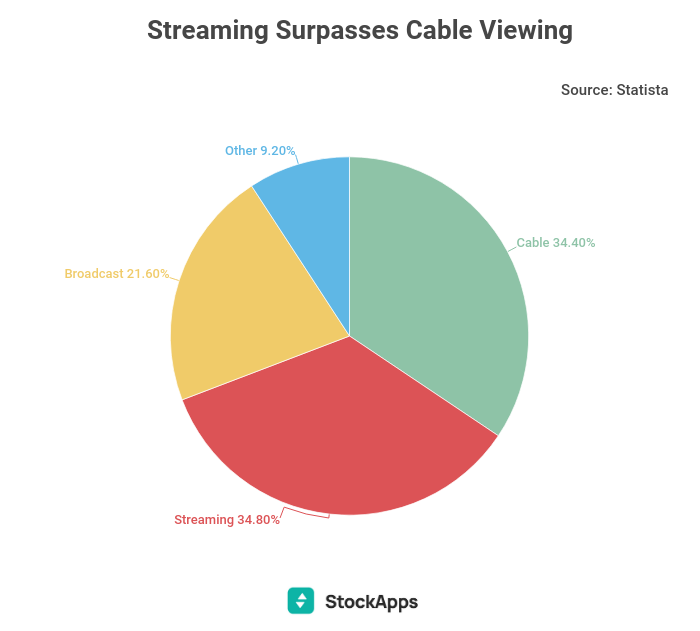Online streaming services such as Netflix, Hulu, and Youtube have been steadily increasing in popularity in the US for the past few years. According to data from StockApps.com, streaming accounted for 34.8% of TV screen time in July 2022.
Cable and broadcast (also known as traditional linear TV) accounted for 34.4% and 21.6% of total viewing time, respectively. This is the first time streaming surpassed cable and broadcast since the viewership tracking began.
The data also revealed that Americans spent approximately 191 billion minutes per week streaming.
Edith Reads, an analyst at StockApps, commented on the data. She said, “Streaming looks promising in the US. It is not only popular but also has a lot of potential for growth.
“The data suggests that people are increasingly ditching cable and broadcast in favor of streaming. This trend is likely to continue in the coming years.”
She added, “It is also worth noting that streaming is not just for young people. The data shows that all age groups are streaming more and more.”

Netflix records the highest views
Notable streaming providers such as Netflix, Hulu, Prime Video, and Youtube achieved record-high shares in July. However, Netflix was the most dominant. The share of total Netflix consumption jumped 8% thanks to the release of Stranger Things on July 1. Despite losing subscribers in the past two quarters, the future holds bright, especially considering the age difference in TV viewing.
Reed Hastings, the co-founder of Netflix, believes that streaming is the future of television. He recently said, “I think over the next 10 years, we’ll see a shift from linear TV to on-demand viewing.” He added that traditional linear TV is “declining very rapidly,” and people are “moving away” from it.
Future of streaming
Streaming is slowly but surely becoming the primary way Americans consume television. It has a lot of growth potential and will only become more popular in the coming years. This shift from cable and broadcast is likely to continue as more and more people adopt streaming services.
The reliance on cable for sports also had an impact on the data. Without the support of the Summer Olympics and the NHL and NBA’s extended playoffs, sports viewing fell by 34%. Consequently, the medium’s overall viewership fell by 8.9% year over year. Even worse was broadcast TV, which had a 9.8% overall decline and a 41% decline in sports.
Whether Streaming will maintain this momentum is uncertain. Nevertheless, this is a significant achievement that might impact moving forward.
It won’t be a shocker if more money goes towards shows primarily or solely available online. Creators and TV providers now understand that users are more inclined to stream than browse cable channels.





Leave a Comment